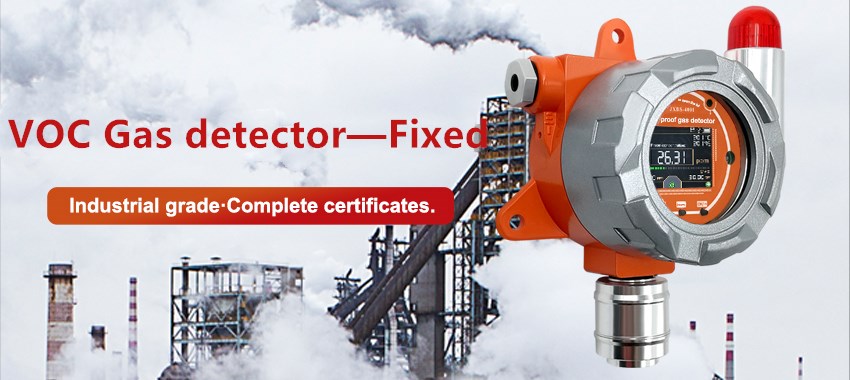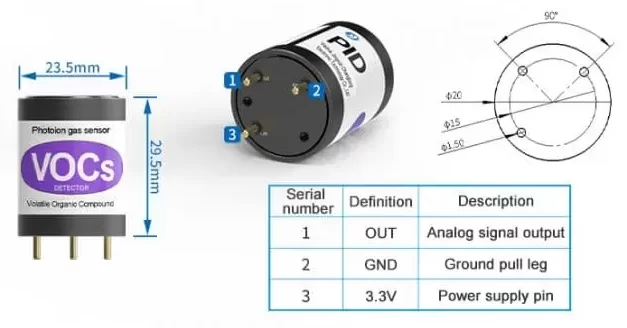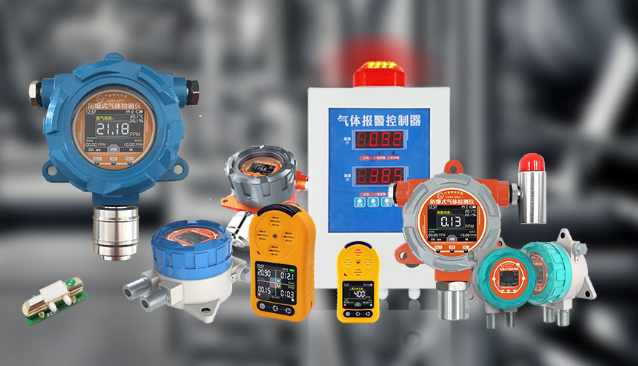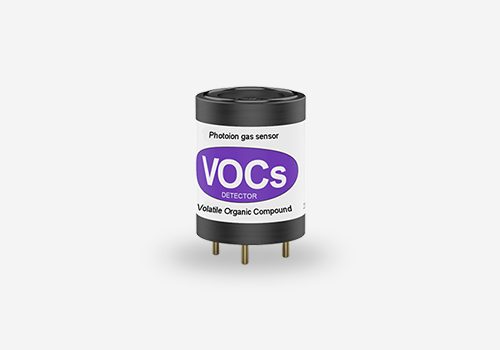Volatile Organic Compounds (VOCs) are organic chemicals that can easily evaporate into the air. They are emitted from a variety of sources, such as industrial processes, vehicle emissions. Exposure to high levels of VOCs can have adverse effects on human health and the environment, making it important to monitor and control their presence. One technology that has emerged as a valuable tool for detecting VOCs is the VOC sensor. This essay will explore the working principle and application of VOC sensors, as well as their advantages in various fields.
Working principle of VOC sensor
The working principle of VOC sensor is based on their ability to detect and quantify the presence of volatile organic compounds in the air. These sensors utilize various technologies, such as metal-oxide semiconductors, photoionization detectors, and gas chromatography, to measure the concentration of VOCs in the surrounding environment. Each type of sensor operates differently, but they all rely on the interaction between VOC molecules and the sensor’s detection mechanism to produce a measurable signal.

Metal-oxide semiconductor VOC sensors work by utilizing a semiconductor material, typically tin dioxide, which changes its electrical conductivity in the presence of VOCs. When VOC molecules come into contact with the sensor’s surface, they cause a change in the conductivity of the semiconductor, which is then measured and converted into a concentration reading. Photoionization detectors, on the other hand, use ultraviolet light to ionize VOC molecules, producing a measurable current that corresponds to the concentration of VOCs present. Gas chromatography is a more complex and precise technique that involves separating and analyzing VOCs based on their chemical properties, providing detailed information about the composition of the VOC mixture.
Applications of VOC sensor
VOC sensor have a wide range of applications across various industries and sectors. In industrial settings, VOC sensors are monitor air quality and ensure compliance with environmental regulations. They are commonly employed in manufacturing facilities, chemical plants, and refineries to detect leaks, spills, and emissions of VOCs. By providing real-time data on VOC concentrations, these sensors enable operators to take prompt action to mitigate potential hazards and prevent environmental contamination.

VOC sensors are also valuable tools for indoor air quality monitoring in commercial and residential buildings. They can detect the presence of VOCs emitted from building materials, furnishings, cleaning products, and other sources, helping to identify potential sources of indoor air pollution. This is particularly important for maintaining a healthy and comfortable indoor environment, as high levels of VOCs can cause respiratory irritation, headaches, and other health issues. By using VOC sensors, building managers and homeowners can implement effective ventilation and air purification strategies to reduce VOC exposure.

In addition to industrial and indoor air quality monitoring, VOC sensors play a crucial role in environmental monitoring and research. They are used in field studies and monitoring programs to assess the impact of VOC emissions on air quality, ecosystems, and human health. By deploying VOC sensors in urban areas, near industrial facilities, and in sensitive natural environments, researchers can gather valuable data on the distribution and behavior of VOCs in the atmosphere. This information is essential for understanding the sources and fate of VOCs, as well as for developing strategies to mitigate their environmental impact.
Key advantages of VOC sensor
One of the key advantages of VOC sensors is their ability to provide real-time and continuous monitoring of volatile organic compounds. Unlike traditional air sampling methods, which require collecting samples and sending them to a laboratory for analysis, VOC sensors can immediately detect and quantify VOC concentrations in the field. This rapid response capability is essential for identifying and addressing potential VOC exposure risks in a timely manner, whether in industrial, indoor, or environmental settings.

Another advantage of VOC sensors is their sensitivity and selectivity in detecting a wide range of VOCs. Different types of VOC sensors are capable of detecting various classes of volatile organic compounds, including aliphatic hydrocarbons, aromatic hydrocarbons, halogenated compounds, and oxygenated compounds. This versatility allows VOC sensors to provide comprehensive monitoring of VOC emissions from diverse sources, making them valuable tools for regulatory compliance, pollution control, and environmental research.
Furthermore, VOC sensors are becoming increasingly compact, portable, and cost-effective, making them accessible for a wide range of applications. Miniaturization and advancements in sensor technology have led to the development of handheld and wearable VOC sensors that can be easily deployed in the field. These portable sensors enable on-site measurements and personal exposure monitoring, empowering individuals and organizations to assess VOC levels in real time and make informed decisions to protect human health and the environment.
Conclusion
In conclusion, As technology continues to advance, VOC detectors are expected to play an increasingly important role in protecting human health and the environment from the adverse effects of VOC exposure.
